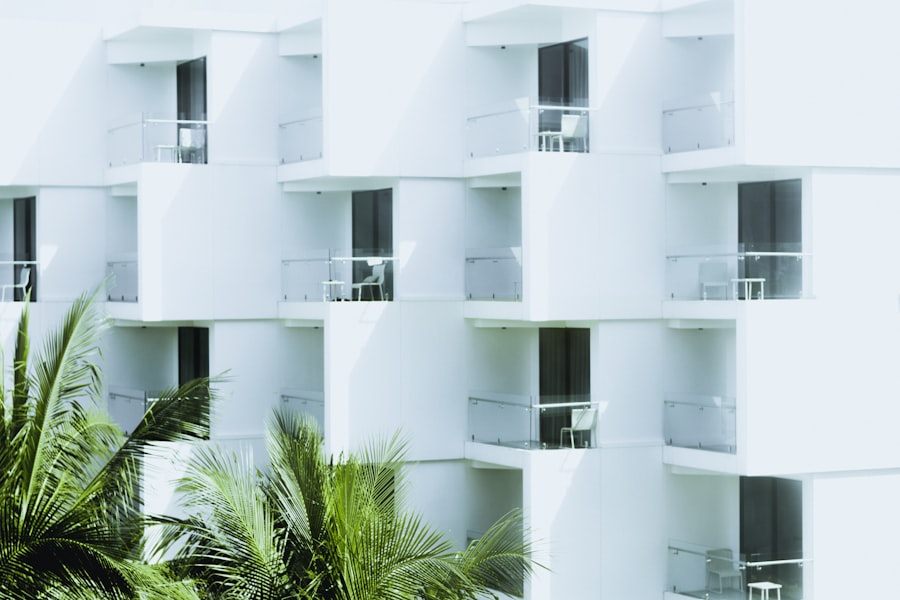Navigating the intricate landscape of tax codes can be daunting, especially when it comes to luxury housing. As a potential investor or developer, understanding the benefits embedded within these codes is crucial for maximizing your financial returns. Tax code benefits for luxury housing can significantly influence your investment decisions, shaping the market dynamics and offering opportunities that may not be immediately apparent.
By delving into the nuances of these benefits, you can better position yourself to take advantage of the incentives available, ultimately enhancing your portfolio and contributing to the luxury housing sector. The allure of luxury housing extends beyond its aesthetic appeal and high-end amenities; it is also deeply intertwined with financial strategies that leverage tax advantages. These benefits can manifest in various forms, from deductions and credits to exemptions that can substantially reduce your tax liability.
As you explore the current tax code, you will discover how these incentives not only bolster your investment but also play a pivotal role in shaping the broader real estate market. Understanding these elements is essential for anyone looking to thrive in the competitive world of luxury housing.
Key Takeaways
- Tax code benefits for luxury housing provide significant financial advantages for developers and investors.
- The current tax code for luxury housing includes provisions for deductions, credits, and exemptions that can lower the overall tax burden.
- Tax breaks and incentives for luxury housing developers can include accelerated depreciation, historic preservation credits, and low-income housing tax credits.
- Tax code benefits can have a significant impact on the luxury housing market, influencing development trends and investment decisions.
- A comparison of tax code benefits for luxury housing versus affordable housing reveals disparities in the allocation of resources and support.
Overview of the Current Tax Code for Luxury Housing
The current tax code is a complex framework that governs how luxury housing is treated in terms of taxation. It encompasses a variety of provisions that can be advantageous for developers and investors alike. For instance, certain tax deductions are available for expenses related to property development, maintenance, and improvement.
These deductions can significantly lower your taxable income, allowing you to reinvest those savings into further developments or enhancements to existing properties. Moreover, the tax code often includes specific incentives aimed at promoting luxury housing development in targeted areas. These incentives may come in the form of tax credits for building in economically distressed regions or for incorporating sustainable building practices.
By understanding these provisions, you can strategically plan your projects to align with the tax code, ensuring that you maximize your benefits while contributing positively to the community.
Explanation of Tax Breaks and Incentives for Luxury Housing Developers

Tax breaks and incentives are designed to stimulate growth in the luxury housing sector, making it more appealing for developers like yourself. One of the most significant incentives is the Low-Income Housing Tax Credit (LIHTC), which, while primarily aimed at affordable housing, can sometimes be leveraged in mixed-income developments that include luxury units. This allows you to diversify your portfolio while still benefiting from substantial tax credits.
Additionally, many local governments offer property tax abatements or exemptions for new luxury developments. These incentives can reduce your overall tax burden during the initial years of a project, allowing you to allocate more resources toward construction and marketing efforts. Furthermore, some jurisdictions provide sales tax exemptions on materials used in construction, which can lead to considerable savings.
By taking advantage of these breaks, you can enhance your project’s profitability while contributing to the local economy through job creation and increased property values.
Analysis of the Impact of Tax Code Benefits on the Luxury Housing Market
| Year | Number of Luxury Housing Sales | Average Sale Price | Percentage Change in Sales |
|---|---|---|---|
| 2017 | 500 | 1,000,000 | 10% |
| 2018 | 550 | 1,100,000 | 5% |
| 2019 | 600 | 1,200,000 | 8% |
The impact of tax code benefits on the luxury housing market is profound and multifaceted. These incentives not only encourage new developments but also influence pricing strategies and market dynamics. When developers like you capitalize on tax breaks, it often leads to an influx of luxury properties in a given area, which can drive up competition and ultimately benefit consumers through improved offerings and amenities.
Moreover, as luxury housing becomes more accessible due to these financial incentives, it can attract a broader demographic of buyers and renters. This diversification can lead to a more vibrant community atmosphere, as luxury developments often include mixed-use spaces that foster social interaction and economic activity. However, it is essential to remain aware of potential market saturation; an oversupply of luxury units could lead to price corrections that may affect your investments.
When comparing tax code benefits for luxury housing with those available for affordable housing, distinct differences emerge that reflect broader societal priorities. While both sectors benefit from various incentives, affordable housing often receives more substantial support through federal programs like the LIHTThis program is specifically designed to encourage the development of low-income housing by providing significant tax credits that can offset construction costs. In contrast, luxury housing developers may find themselves navigating a patchwork of local incentives that vary widely by jurisdiction.
While there are opportunities for tax breaks in luxury developments, they may not be as robust or consistent as those available for affordable housing projects. This disparity raises important questions about equity in housing policy and whether the current tax code adequately addresses the needs of all segments of the population.
Discussion of the Economic and Social Implications of Tax Code Benefits for Luxury Housing
The economic implications of tax code benefits for luxury housing extend beyond individual developers; they can shape entire communities and local economies. By incentivizing luxury developments, governments aim to attract high-income residents who contribute to local tax revenues through property taxes and consumer spending. This influx can lead to improved public services and infrastructure, benefiting all residents in the area.
However, there are social implications to consider as well. The focus on luxury housing development can exacerbate issues related to income inequality and gentrification. As luxury units are built, they may displace lower-income residents and alter the character of neighborhoods.
This raises ethical questions about who benefits from these tax incentives and whether they contribute to a balanced approach to urban development that serves diverse populations.
Examination of the Potential for Abuse and Misuse of Tax Code Benefits in Luxury Housing Development

While tax code benefits are designed to stimulate growth in the luxury housing sector, there is potential for abuse and misuse that warrants scrutiny. Developers may exploit loopholes or misrepresent project intentions to qualify for incentives that were not intended for their specific use. For instance, some may claim benefits associated with affordable housing while primarily focusing on high-end units, undermining the original purpose of these programs.
Additionally, there is a risk that developers could engage in practices such as “land banking,” where they acquire properties solely to benefit from future tax incentives without any intention of developing them promptly. This behavior can distort market dynamics and limit opportunities for genuine development that meets community needs.
Case Studies of Successful Luxury Housing Projects Utilizing Tax Code Benefits
Examining successful case studies can provide valuable insights into how tax code benefits have been effectively utilized in luxury housing projects. One notable example is a high-rise condominium development in an urban center that leveraged local property tax abatements during its construction phase. By reducing initial costs through these incentives, the developer was able to allocate more resources toward high-quality finishes and amenities, ultimately attracting affluent buyers and achieving rapid sales.
Another case involves a mixed-use development that incorporated both luxury apartments and affordable units under the LIHTC program. This project not only benefited from substantial tax credits but also fostered a sense of community by providing diverse housing options within a single development. The success of such projects demonstrates how strategic use of tax code benefits can lead to profitable outcomes while addressing broader social goals.
Critique of the Ethical and Moral Justification for Tax Code Benefits in Luxury Housing
The ethical implications surrounding tax code benefits for luxury housing are complex and often contentious. On one hand, proponents argue that these incentives stimulate economic growth and job creation, justifying their existence within a competitive market. However, critics contend that prioritizing luxury developments over affordable housing undermines social equity and exacerbates existing disparities.
As you consider these perspectives, it is essential to reflect on the moral responsibility that comes with leveraging tax benefits. Are you contributing positively to community development, or are you merely capitalizing on financial advantages at the expense of those in need? Engaging in this dialogue can help shape your approach to future projects and ensure that your investments align with ethical considerations.
Proposed Reforms and Changes to the Tax Code for Luxury Housing
To address some of the concerns surrounding tax code benefits for luxury housing, several reforms could be considered. One potential change is implementing stricter guidelines on how developers qualify for certain incentives, ensuring that they genuinely contribute to community needs rather than simply seeking profit maximization. This could involve requiring a percentage of affordable units within luxury developments or mandating community engagement during project planning.
Additionally, expanding existing programs like the LIHTC to include more robust support for mixed-income developments could create a more balanced approach to housing policy. By incentivizing projects that cater to diverse income levels, you can help foster inclusive communities while still benefiting from tax advantages.
Conclusion and Future Outlook for Tax Code Benefits in Luxury Housing
As you navigate the evolving landscape of luxury housing development, understanding tax code benefits will remain essential for maximizing your investments. While these incentives offer significant opportunities, they also come with responsibilities that require careful consideration of their broader impact on communities and markets. Looking ahead, it is likely that discussions around reforming tax code benefits will continue as stakeholders seek a more equitable approach to housing policy.
By staying informed about potential changes and engaging in ethical practices, you can position yourself as a responsible developer who contributes positively to both your bottom line and society at large. The future of luxury housing will depend not only on financial acumen but also on a commitment to fostering inclusive communities through thoughtful development strategies.
The tax code in many countries often provides significant advantages to luxury housing, creating disparities in the real estate market. These benefits can include deductions, credits, and other incentives that disproportionately favor high-end properties, making it easier for wealthy individuals to invest in and profit from luxury real estate. For a deeper understanding of how these tax policies contribute to wealth inequality and the dynamics of the housing market, you can explore a related article on this topic by visiting
